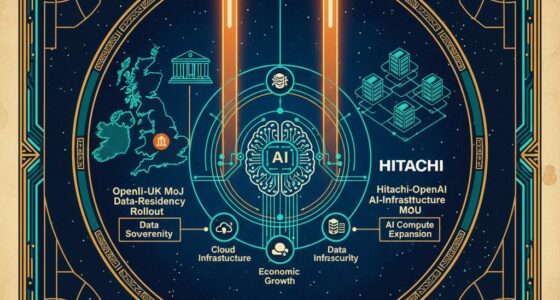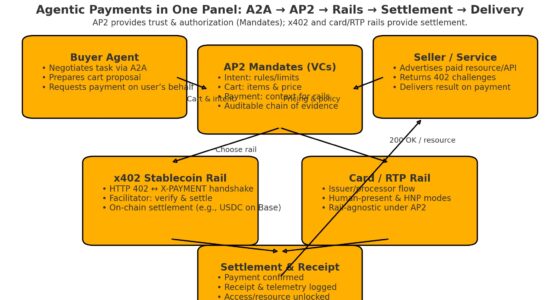TL;DR
- Cybersecurity: eSentire integrated Anthropic’s Claude into its Atlas XDR and cut end-to-end SOC investigations from ~5 hours to ~7 minutes with ~95% Tier-3-level decision alignment. Venturebeat+1
- Telecom: Google Cloud’s Autonomous Network Operations framework is yielding ~25% lower MTTR at early adopters (e.g., Vodafone, Deutsche Telekom), with DT’s RAN Guardian agent monitoring and acting on RAN anomalies in real time. Google Cloud+1
- Pattern: Agentic systems that orchestrate tools over unified telemetry deliver measurable time-to-value—provided you handle data governance, intervention controls, and post-incident auditability.
The new playbook: agentic systems over unified telemetry
The breakthrough in both sectors isn’t just “adding GenAI.” It’s agentic systems that reason over normalized, end-to-end telemetry (XDR in security; network state, inventory, performance, and coverage in telecom) and then act—either by drafting an analyst-grade investigation (SOC) or by prioritizing and triggering remediation (NOC/RAN). This is why the gains look discontinuous rather than incremental. eSentire+1
Case study 1 — Cybersecurity: Atlas XDR + Claude
What happened: eSentire deployed Anthropic’s Claude across Atlas XDR. The result: investigations compressed from ~5 hours to ~7 minutes (~43× faster) while matching senior (Tier-3) analyst decisions ~95% of the time. Practically, this shifts containment windows from “hours” to “minutes,” reducing dwell time and analyst fatigue. Venturebeat
How it works (abridged):
- Data foundation: Atlas XDR aggregates endpoint, network, identity, log, and cloud telemetry to cut noise before reasoning begins. eSentire
- Reasoning + tooling: The agent composes multi-step investigations (enrichment, correlation, hypothesis testing) and packages them into analyst-ready outputs. Humans still approve containment or escalations. Venturebeat
Why it matters: For MSSPs and in-house SOCs, this is a concrete cost-to-serve and MTTA/MTTR reset without ripping out existing tools—because the agent sits atop them and coordinates. Venturebeat
Case study 2 — Telecom: Google Cloud’s Autonomous Network Operations
What happened: On June 12, 2025, Google Cloud unveiled an AI-first framework for Autonomous Network Operations. Early deployments at operators like Vodafone and Deutsche Telekom show ~25% average reduction in mean time to repair (MTTR). Google Cloud+1
DT’s RAN Guardian: A multi-agent system built on Google Cloud capabilities continuously analyzes RAN behavior, predicts/detects anomalies, and prioritizes fixes using cross-domain data (monitoring, inventory, performance, coverage)—a concrete step toward intent-driven, zero-touch operations. Google Cloud
What’s under the hood: Real-time graph/state models (e.g., Cloud Spanner as a network “digital twin”), BigQuery analytics, and GAI/agentic layers for decisioning and closed-loop control. The strategic goal: predictable, self-healing networks with standardized playbooks and partners aligned via TM Forum workstreams. Google Cloud+1
Critical nuance: Analysts note open questions around data sovereignty and control planes when hyperscalers mediate autonomy. Telcos will balance vendor frameworks with in-house autonomy roadmaps. TelecomTV
The common pattern (and why it scales)
- Normalize and correlate first. Both wins rely on a clean telemetry substrate (XDR for security; unified network state for telco). Without it, the agent can’t reason reliably. eSentire+1
- Constrain the loop. High-impact but bounded actions—containment recommendations (SOC) or RAN anomaly handling (NOC)—are ideal starter lanes for autonomy. Venturebeat+1
- Human-on-the-loop. Expert review remains essential for safety, drift control, and learning. This is augmentation with selective automation, not full replacement—yet. Venturebeat
Implementation checklist (CIO/CTO quick start)
- Map a “golden path” use case with measurable latency or MTTR pain (e.g., phishing-led lateral movement; RAN congestion & handover issues).
- Unify the data plane (schemas, lineage, PII handling, residency). Agents are only as good as the substrate. Google Cloud
- Design guardrails: approval thresholds, rollback plans, immutable audit trails of agent actions.
- Measure relentlessly: choose 3–5 metrics (investigation cycle time, MTTA/MTTR, false-positive rate, analyst workload hours, customer impact minutes).
- Prepare the org: redefine runbooks as agent-executable workflows; train analysts/engineers to supervise and tune agents.
Risks & mitigations
- Model or tool drift: lock versions; scheduled evaluations; shadow-mode before changes go live.
- Vendor concentration & sovereignty: prefer modular architectures; keep a portable data model; clarify residency and shared-responsibility in MSAs. TelecomTV
- Outage compounding: autonomy must enhance, not weaken, resilience; design for graceful degradation and local failover paths. Medium
Bottom line
Across two very different operating theaters—SOC and NOC/RAN—agentic AI has crossed from promise to provable ROI. If you can give an agent the right data, tools, and guardrails, you can take multi-hour workflows down to minutes and turn reactive ops into predictive, closed-loop systems. The next competitive edge won’t be who has the model; it’ll be who has the clean substrate, the right action space, and the courage to automate.
Sources: VentureBeat report on eSentire/Claude; Google Cloud Autonomous Network Operations announcement and documentation; Telecom trade coverage on MTTR impacts; DT’s RAN Guardian details; Atlas XDR overview; TM Forum collaboration updates; analyst caution on data sovereignty; context on resilience and outages. Medium+6Venturebeat+6Google Cloud+6









